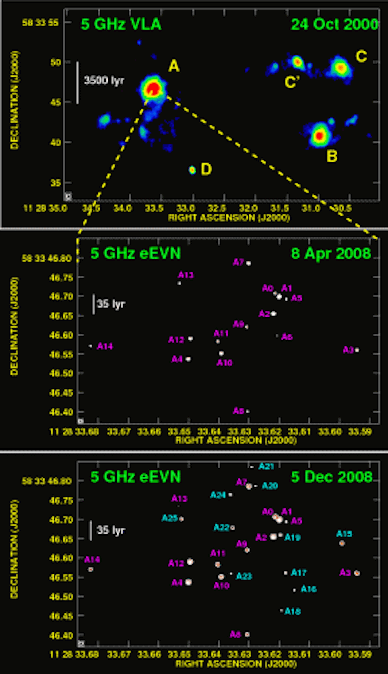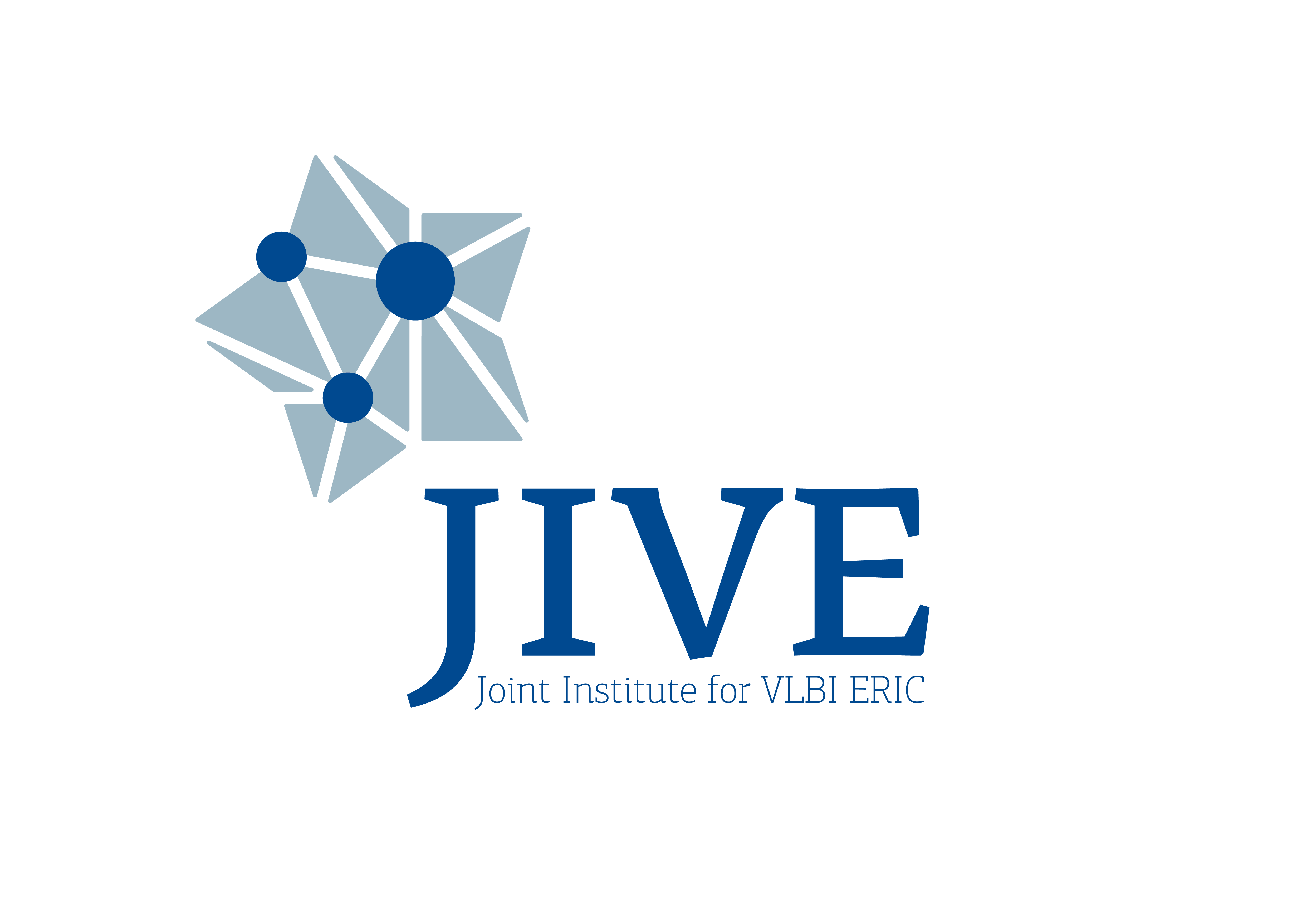
DWINGELOO, the Netherlands (4 December 2009) - The electronic European VLBI Network (e-EVN) was critical in the detection of an "extremely prolific supernova factory" in the buried nucleus of a starburst galaxy last year. In a Letter published in Astronomy & Astrophysics journal (Vol. 507 No. 1, November III 2009), Miguel A. Perez-Torres, Cristina Romero-Canizales and Antonio Alberdi from the Instituto de Astrofisica de Andalucia (IAA) of the Spanish National Research Council (CSIC), and Antonis Polatidis, from ASTRON (The Netherlands) detail their findings of Arp 299-A in the starburst galaxy IC 694, imaged with the e-EVN. The team, led by Perez-Torres, obtained the most sensitive image to date of Arp 299-A at a radio frequency of 5 GHz.
The April and December 2008 observations revealed the presence of a rich cluster of 26 compact radio emitting sources in the center of the nuclear starburst in IC 694, which appear to be young radio supernovae (RSNe) and supernova remnants (SNRs). At least three of these sources are relatively young, slowly-evolving, long-lasting radio supernovae while most of the remaining can be identified with supernovae remnants. The results yield support for a recent (less than 10-15 million years old), intense, instantaneous starburst in the innermost regions of IC 694.
These observations were part of a multi-epoch monitoring program, requiring observations separated by a few months. The ability to schedule e-VLBI sessions in between regular (non-electronic) EVN sessions made it easier to organise the observations. Additionally, the quick feedback provided by e-VLBI made it possible to organise follow-up observations of new transients.
e-VLBI observations by the EVN have been made possible by EXPReS (Express Production Real-time e-VLBI Service). From March 2006 through August 2009, EXPReS developed e-VLBI into a reliable and supported service offered by the EVN by establishing and improving network connectivity throughout the EVN network and improving the computing capabilities of the EVN's MKIV correlator to process electronic VLBI data streams in real-time. Prior to EXPReS, Target of Opportunity observations were available only by individual members of the EVN and not by the EVN as a network.
# # #
About the EVN
The European VLBI Network (EVN, www.evlbi.org) is a collaboration of the major radio astronomical institutes in Europe, Asia and South Africa that conducts unique, high resolution, radio astronomical observations of cosmic radio sources. It is the most sensitive VLBI array in the world, thanks to the collection of extremely large telescopes that contribute to the network.
About JIVE
The Joint Institute for VLBI in Europe (JIVE, www.jive.nl) is a scientific foundation with a mandate to support the operations of the European VLBI Network (EVN). For this purpose it maintains, operates and develops the MKIV EVN Data Processor, a powerful supercomputer that combines the signals from radio telescopes located across the planet. Through this technique, called Very Long Baseline Interferometry (VLBI), astronomers can make detailed images of cosmic radio sources, providing astronomers with the clearest, highest resolution view of some of the most distant and energetic objects in the Universe.
Contact:
Miguel Ángel Pérez-Torres, Research Scientist
Instituto de Astrofisica de Andalucia
+34 958-230-532
torres@iaa.es
www.iaa.es
Antonis Polatidis, Head of Science Support
ASTRON (Netherlands Institute for Radio Astronomy)
+31 (0)521 595 517
polatidis@astron.nl
www.astron.nl
